Target 15.5 Reducing degradation of natural habitats
Take urgent and significant action to reduce the degradation of natural habitats, halt the loss of biodiversity and, by 2020, protect and prevent the extinction of threatened species
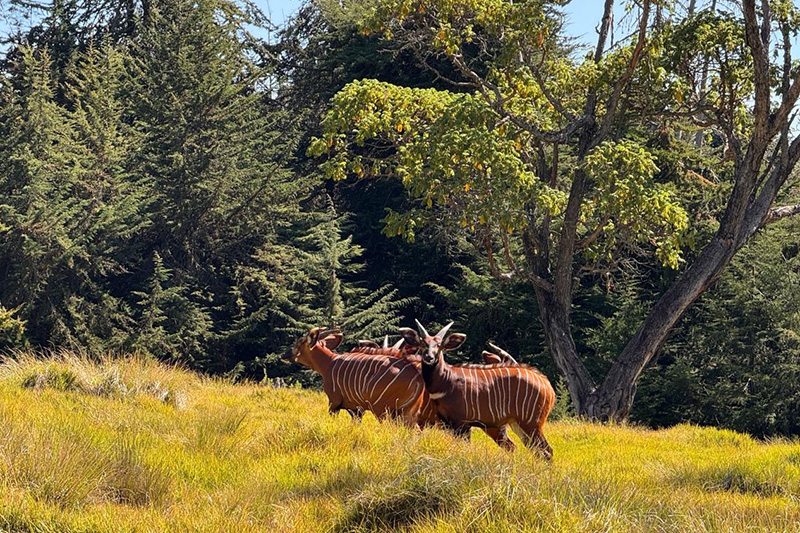
Mountain Bongo Antelope Repatriation Project
FIU scientists are leading an international effort to save the critically endangered mountain bongo antelope of Kenya. The Mountain Bongo Repatriation Project represents a rare milestone in wildlife conservation, aiming to restore a critically endangered flagship species to self-sustaining levels in the wild from captive U.S. stock. We are on the verge of restoring a sustainable wild bongo population in the Mt. Kenya World Heritage Site with the recent establishment of The Meru Bongo & Rhino Conservation Trust in Kenya. This effort is helping to protect Mt. Kenya and with it, the high-mountain ecosystem that supplies 80 percent of Kenya’s people with clean, fresh water. In collaboration with Meru County Government, Ntimaka and Kamulu Community Forest Associations, Kenya Wildlife Service, Kenya Forest Service, Lewa Wildlife Conservancy, Rare Species Conservatory Foundation (RSCF) and Florida International University's Tropical Conservation Institute, the trust is coordinating recovery of both the Mountain Bongo Antelope and Black Rhinoceros. These critically endangered flagship species have disappeared from Mt. Kenya's forests, but now have renewed hope in the wild thanks to aggressive protection, proven conservation science and conservation breeding and effective population management. The trust will oversee a new sanctuary that will receive bongo antelope from RSCF, currently being bred in semi-wild conditions in Florida.

Pangolins, the World's Most Trafficked Mammal
FIU is leading Operation Pangolin, an international collaboration to save the world’s most trafficked and largely unknown wild mammal. Many solutions to environmental degradation focus on “hotspots” and have failed to consider the complex drivers of biodiversity declines. Many solutions have also failed to achieve the necessary regional and global scale to make impactful and sustainable conservation gains. No group of species on the planet so perfectly embodies these failures as pangolins. These evolutionarily distinct and globally endangered mammals are in dire need of urgent conservation action. Yet, scientists and policymakers lack sophisticated understanding about the pangolin scale and meat trafficking supply chains, which move an estimated 250,000 pangolins a year out of African and Asian forests to consumers in China, Vietnam, and even western Europe and the United States. The collateral impacts of trafficking on socio-environmental health compound the already significant species conservation ramifications and put the global human community at risk. Pangolin range states and conservation governing bodies including CITES and IUCN have declared that developing pangolin-specific monitoring methods linked to anti-trafficking efforts is the highest conservation priority for pangolins. The knowledge and data gaps have prevented the design of robust monitoring and management programs for wild pangolin populations and interventions for combating wildlife crime. Operation Pangolin capitalizes on the latest advances in technology machine-learning, big data, and interdisciplinary team science to develop cost-effective solutions to the global pangolin crisis. This project is taking pangolin conservation from a veritable dark age for cryptic species conservation to having the knowledge to inform appropriate conservation interventions and evidence-informed international policy implementation, all while ensuring the human and technical capacity to manage wildlife populations and their habitats. We are focused on reducing the extinction-risk and laying the groundwork for population growth in pangolins and other critically endangered species of global concern. Under Operation Pangolin’s global umbrella, we are ensuring the synergistic benefits of collaboration, data generation, and information sharing give the world’s eight pangolin species the best chance of survival.
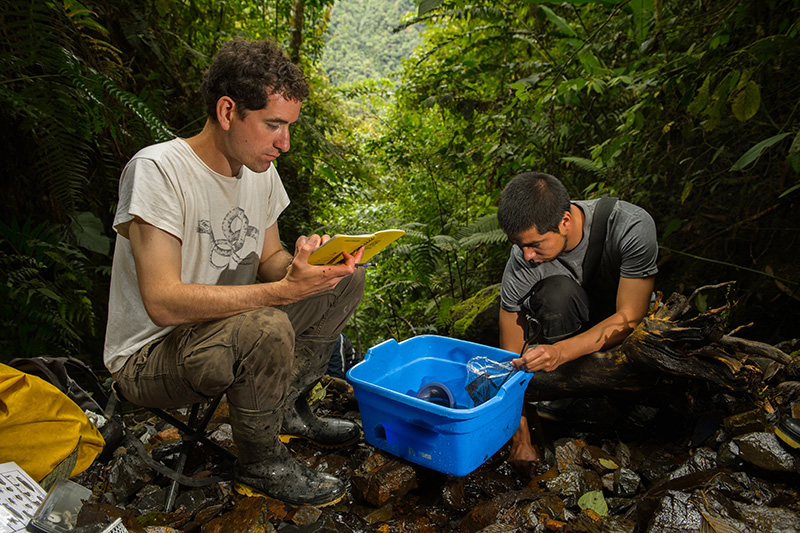
Tropical Amphibians
Scientists from FIU’s Institute of Environment are going to the far corners of the world and the highest reaches of the Andes Mountains to study and protect frogs in their natural environments and commercially managed areas. Our research teams are also searching for biodiversity, identifying new species of amphibians in previously unexplored parts of the Amazon. One researcher alone has accounted for the discovery of 45 new species of amphibians, along with 7 species of previously unknown reptiles, a diatom and a spider. These discoveries are a critical first step for conservation of species previously unknown to scientists and policymakers. Recently, these same scientists were also part of an international collaboration to expedite the establishment of nine new protected areas in Peru within the Amazonian lowlands and Andean foothills bordering Brazil, Colombia and Ecuador. As an increasing number of frog species are threatened with extinction, this work is becoming ever-more critical in helping protect the frogs we know should populate certain areas as well as the ones we don't yet know exist. This research is helping to guide conservation strategies all across the tropics.

Africa's Slender-Snouted Crocodiles
FIU researchers are working to restore populations of two species of slender-snouted crocodiles in Africa. Long thought to be one species, these crocodiles were considered one of the most endangered crocodiles on the entire continent. But while conducting DNA research as part of routine conservation work, the scientists discovered the critically endangered population was actually comprised of two distinct species — the West African slender-snouted crocodile and the newly identified Central African slender-snouted crocodile, the first new living crocodile species to be defined and named in nearly 85 years. Efforts are now focusing on captive breeding and reintroduction programs to help save these crocodiles from extinction. The scientists are researching national parks and forest reserves that could serve as reintroduction sites along the Ivory Coast. And in recent years, a breeding colony of 34 West African slender-snouted crocodile adults produced 42 hatchlings, a sign of hope for these critically endangered reptiles.

Parrots
FIU’s Tropical Conservation Institute (TCI) is involved in an array of parrot conservation efforts in South America and the Caribbean to protect this threatened and highly trafficked taxa. The Rare Species Conservatory Foundation, under the direction of a top conservation biologist and FIU research scientist, has led a 30-year captive-breeding program for the Red-browed parrot — South America’s most endangered Amazon parrot — and maintains the only breeding group in North America. Starting with 11 birds 30 years ago, these scientists have helped produce a self-sustaining captive population and integrated recovery techniques and methods with Brazilian partners. The Red-brow is now recovering in the wild. On Dominica, this same team is engaging local NGOs and Forestry Division personnel to reinstate the longstanding Wildlife Conservation Partnership that, for the past 26 years, supported protection of Dominica’s national bird — the Imperial Parrot. Recently, TCI was approached by an indigenous Kalinago graduate student from the University of the West Indies to advise and co-develop Imperial parrot population surveys. On St. Vincent, TCI provided supplies and support following the devastating eruption of the Soufriere volcano. We are now working with the Vincentian government to monitor parrots, offer capacity building opportunities to their Forestry personnel and train students in wildlife monitoring methods.
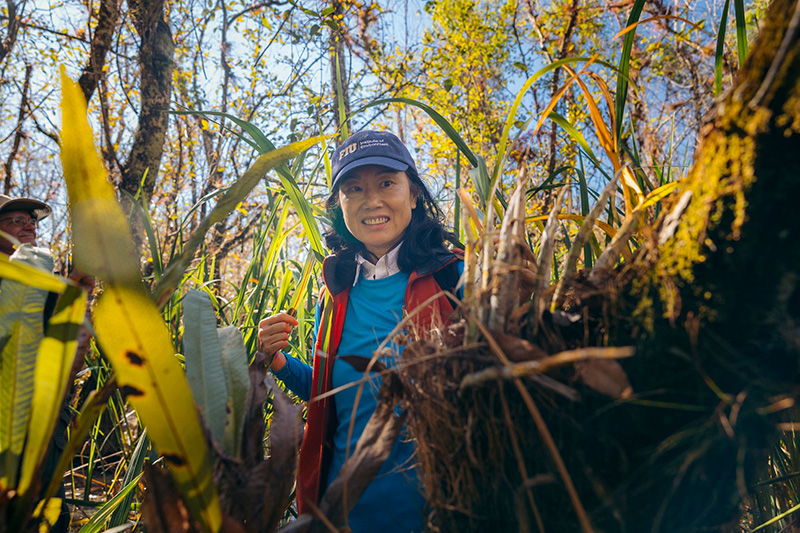
Endangered Orchids
Researchers from FIU’s International Center for Tropical Botany are investigating the impacts of climate change on rare and threatened species, how to conserve heavily exploited plant species, and the role of biotic interactions in population persistence and expansion. From South Florida to southern China, their work is conducted in tropical communities all across the world. They are also working on rare plant restoration of endangered orchids and serve as part of the IUCN SSC Orchid Specialist Group and the wild orchid trade subgroup. These researchers are also investigating violations of CITES protection for wild orchids in Asia and fighting to close policy gaps that only prioritize animals. Their research continues to inform conservation strategies and management of some of the world’s rarest plants.
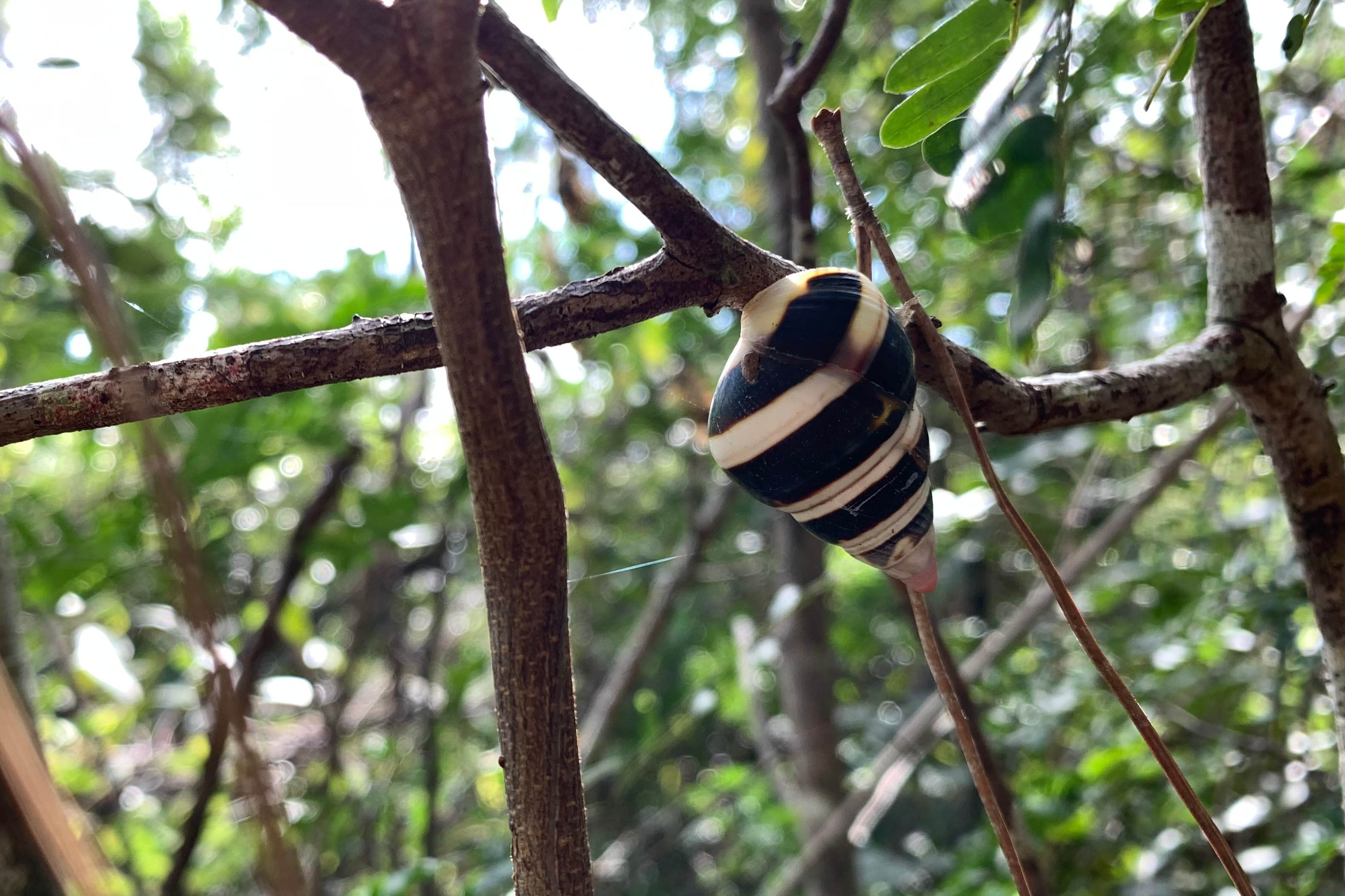
Tree Snails
Florida's subtropical forests were once dripping with tree snails that National Geographic referred to as "living jewels." Predation by invasive species, along with existing and historical pressures on tree snails, is continuing to accelerate the decline of tree snail populations and may lead to local extirpation. FIU scientists are working to preserve native snails' and restore their status as iconic South Florida fauna. They monitor the populations of both tree snails and their invasive predators to understand their interactions and conservation needs. In addition, we are collaborating with local stakeholders, from government agencies to private landowners, to develop measures that directly protect tree snails from predation by invasive species — specifically, several invasive species of snail-eating land planarians that have rapidly spread across South Florida and other tropical regions, causing both snail population decline and extinction events.
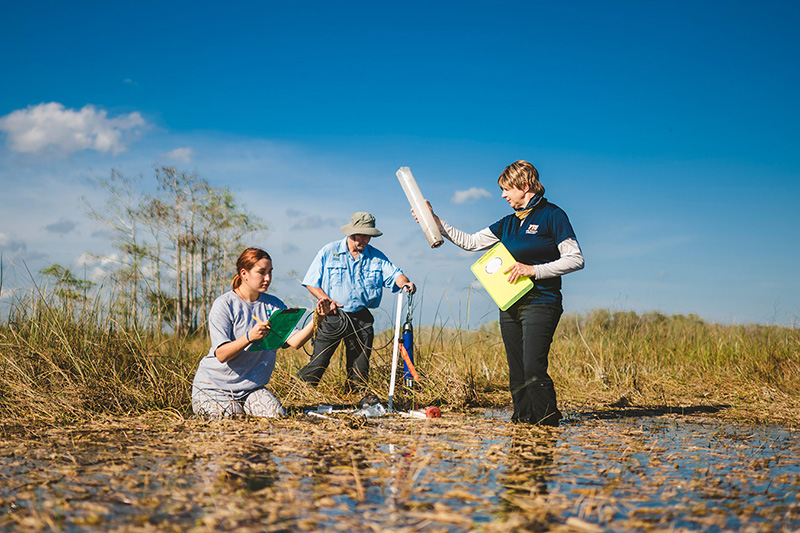
The Florida Everglades
Researchers in FIU’s Institute of Environment are leading the science behind one of the largest ecosystem restoration projects on the planet — the Florida Everglades. Designed to improve water quality and restore the hydrology and ecology of this iconic and imperiled ecosystem, restoration efforts stretch from Central Florida to Florida Bay, covering more than 18,000 square miles. For more than 40 years, our scientists have been conducting research on all aspects of the Everglades including ecosystem health, water quality, ecosystem function and services, biodiversity value, plant life, animal life and much more. Nearly 30 years ago, our scientists set the water quality standard by advising the restriction of phosphorous to 10 parts per billion for Everglades National Park — a standard incorporated into the federal Comprehensive Everglades Restoration Plan and a standard that is still in place today. Currently, 102 FIU faculty, staff and students work in the Florida Everglades, guiding management, restoration and protection. The FIU Institute of Environment leads the NSF-supported Florida Coastal Everglades Long Term Ecological Research program, a network of 19 universities, 8 government agencies, two NGOs and one institute. In addition to solutions-focused research initiatives, the FCE-LTER has collected the most comprehensive and long-term data on the Everglades, providing a critical baseline for gauging effectiveness of current and future management strategies. And our scientists are always prepared and quick to engage when extreme events strike to further threaten the Everglades’ survival. This can include fast and unpredictable events like hurricanes, fires, cold snaps and droughts or more lingering threats such as saltwater intrusion. More than 8 million people rely on the Florida Everglades for their drinking water, and Florida’s thriving economy hinges on an abundant supply of freshwater. The Florida Everglades is the largest subtropical wilderness in the United States and has helped shape natural heritage, culture and economies. It is home to incredible biodiversity including many threatened and endangered species.

Amazonian Lowlands and Andean Foothills
FIU herpetologists helped gather the critical information needed to expedite the establishment of nine new protected areas in one of the most biologically diverse regions of Peru. As part of an international team focused on biological rapid inventory of amphibians and reptiles, their efforts helped quadruple the previous number of protected areas in Loreto, an expanse of Amazonian lowlands and Andean foothills bordering Brazil, Colombia and Ecuador. More than just scientists, FIU researchers are working all across the world to advocate for protected areas to help secure a future for the planet’s biodiversity.
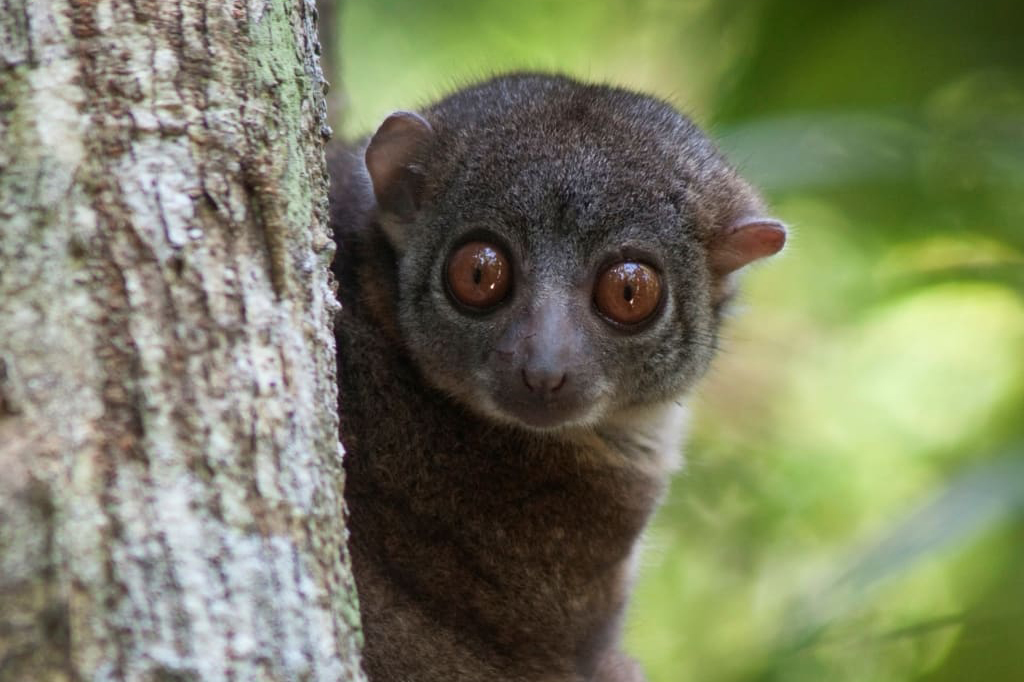
Nosy Be Island, Madagascar
Nosy Be Island, off the northwest coast of mainland Madagascar, is a wildlife hotspot and tourist destination. The clearing of most of the Island’s forests for agriculture, and the unsustainable use of its coastal waters is threatening many of the unique and endangered wildlife that inhabits it. Our scientists are monitoring the status, and identifying the factors affecting the abundance and distribution of marine and terrestrial flagship species on Nosy Be Island. This long-term project uses an island approach and focuses on species listed as Endangered on the IUCN Red List of Threatened Species, including Humpback dolphins, Hawksbill turtles , Nosy Be’s Sportive lemur, Claire’s Mouse lemur and Black lemurs.

Wakal Basin, India
As part of FIU’s International Water Program in the Institute of Environment, scientists developed a Biodiversity Action Plan for the Wakal Basin in India. Terrestrial biodiversity is thought to be high in several parts of the area, including the Phulwari Moll Reserve, which harbors hundreds of species of plants and was declared one of India’s Important Bird Areas by Bird Life International. Little is known about aquatic biodiversity there, as few collections have been made from the basin’s surface water resources. However, as one of the last bodies to contain water late into the dry season, the Wakal River is thought to serve as a refuge area for aquatic biota, especially during drought periods. FIU scientists worked with local ecologists to document aquatic biodiversity and develop strategic actions for protecting biodiversity in the basin.